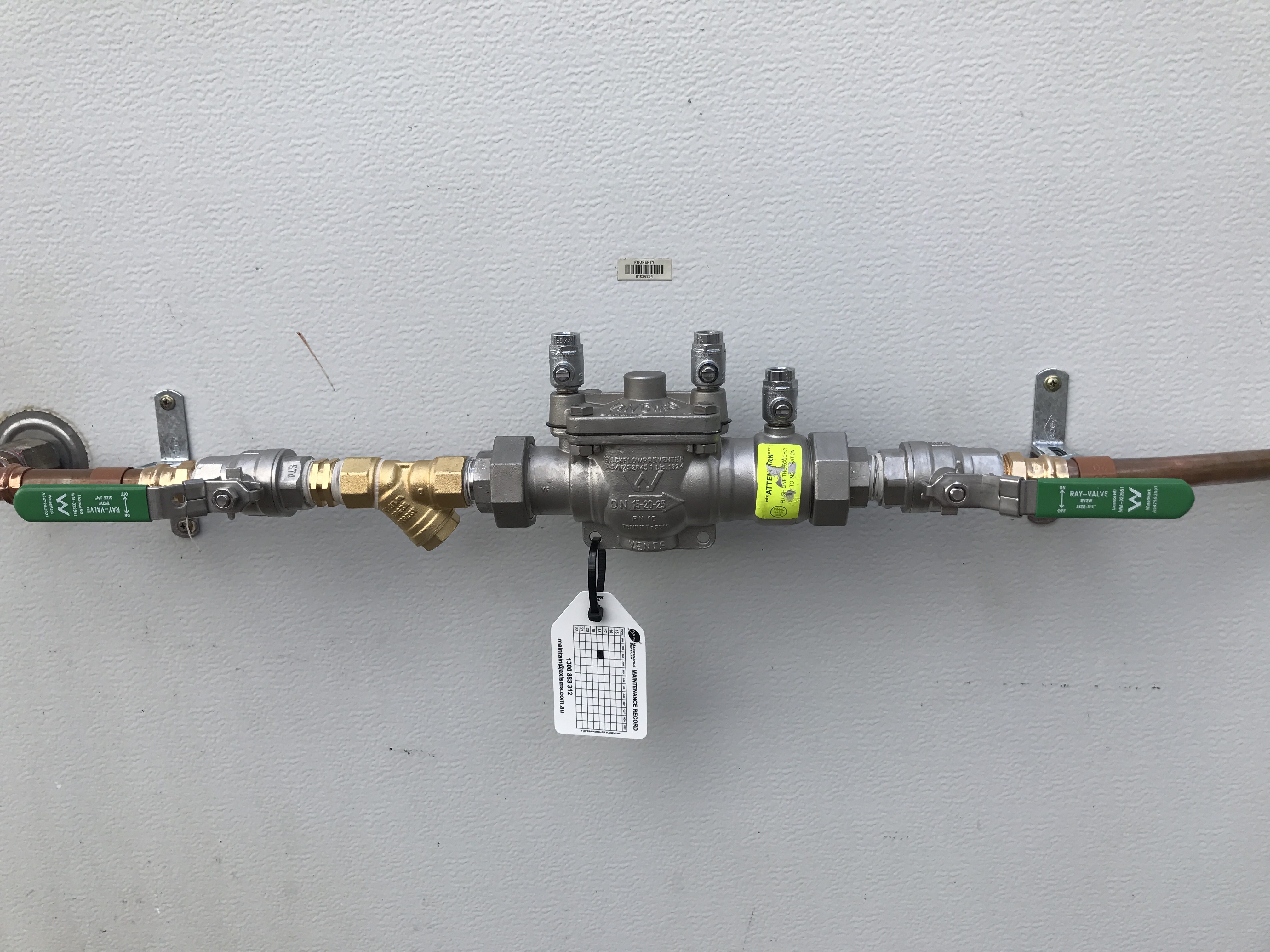Back siphonage

|
| This backflow prevention device includes a valve assembly with isolation valves and strainer. |
Collins Complete Do-It-Yourself Manual was published in 1986. It was created for William Collins Sons & Co. Ltd. by Jackson Day and conceived by Jackson Day Jennings Ltd.
It defines back siphonage as: ‘The siphoning of part of a plumbing system caused by the failure of mains water pressure’.
The negative pressure (or vacuum) that results in back siphonage can happen under conditions such as a water mains break or an increased use of water for fire fighting or construction purposes. When the vacuum occurs and the supply pressure decreases, back siphonage causes the water flow (or other liquid substances) to reverse.
Back siphonage may result in contaminated water being pulled into the clean water supply. This action is referred to as backflow. Backflow can also take place due to back pressure, which can occur when there is higher pressure in the system than in its supply. This can happen in certain types of heating systems where the pressure is increased for some reason (such as thermal expansion in unvented systems).
[edit] Preventing back siphonage
Air gaps can be used to help prevent both back siphonage and backflow. An air gap is a cleared vertical space that is placed in a way that allows it to control the water supply. These gaps can be used to regulate the pressure.
An atmospheric vacuum breaker (or AVB) can be used to prevent back siphonage. It is a type of backflow prevention device that can be used in situations where it is not possible to create an air gap.
Water-using appliances must provide an acceptable degree of protection against backflow or back siphonage. These parameters are determined in BS 6280:1982 Method of vacuum (backsiphonage) test for water-using appliances. Recommendations are also proscribed under the Water Supply (Water Fittings) Regulations 1999.
[edit] Related articles on Designing Buildings
- Backflow.
- Mains water.
- Plumbing.
- Potable water.
- Siphon.
- Vacuum breaker.
- Warning pipe.
- Water consumption.
- Water Services Regulation Authority.
- Water Supply (Water Fittings) Regulations 1999.
[edit] External resources
Featured articles and news
Infrastructure that connect the physical and digital domains.
Harnessing robotics and AI in challenging environments
The key to nuclear decommissioning and fusion engineering.
BSRIA announces Lisa Ashworth as new CEO
Tasked with furthering BSRIA’s impressive growth ambitions.
Public buildings get half a million energy efficiency boost
£557 million to switch to cleaner heating and save on energy.
CIOB launches pre-election manifesto
Outlining potential future policies for the next government.
Grenfell Tower Inquiry announcement
Phase 2 hearings come to a close and the final report due in September.
Progress from Parts L, F and O: A whitepaper, one year on.
A replicated study to understand the opinion of practitioners.
ECA announces new president 2024
Electrical engineer and business leader Stuart Smith.
A distinct type of countryside that should be celebrated.
Should Part O be extended to existing buildings?
EAC brands heatwave adaptation a missed opportunity.
Definition of Statutory in workplace and facilities management
Established by IWFM, BESA, CIBSE and BSRIA.
Tackling the transition from traditional heating systems
59% lack the necessary information and confidence to switch.
The general election and the construction industry
As PM, Rishi Sunak announces July 4 date for an election.
Eco apprenticeships continue help grow green workforce
A year after being recognised at the King's coronation.
Permitted development rights for agricultural buildings
The changes coming into effect as of May 21, 2024.





















